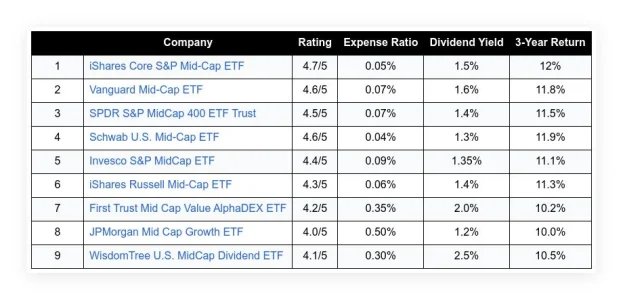There are a lot of people looking to get into the real estate game. However, they have no idea where to start, so they don’t participate. And you can’t exactly blame them. There have historically been high barriers to entry into commercial real estate, such as steep up-front capital costs, so many people cannot afford to buy a property outright.
What’s more, those who do invest will find that real estate investments are illiquid. Real estate cannot be as easily purchased and sold as stocks, bonds, and other equities. Therefore, investors who do have cash on hand are often hesitant to invest in commercial real estate. Simply out of fear that they will not be able to access those funds for other purposes if need be.
For these investors, however, real estate can be a great alternative to investing in stocks. The thing is, in most cases, people don’t even know this option exists. The benefits of investing through a retirement account are numerous, however.
In retirement funds, withdrawals are restricted before retirement age, for instance. Unless investors want to incur steep early withdrawal penalties, these funds are already illiquid.
This article looks at four ways to use retirement accounts to invest in real estate.
Table of Contents
ToggleTake out a 401k loan.
A 401(k) loan is a loan against your retirement savings account. If your employer’s plan allows it, you can withdraw 50% of your savings within a year up to $50,000. This loan can then be used to invest in real estate.
In most cases, you will have to pay back the borrowed money plus interest within 5 years of taking the loan. There is also a limit to how many loans you may have outstanding under your plan. It may also be necessary for you to get your spouse’s or domestic partner’s consent before taking out a loan.
Speed and convenience are the obvious advantages of this option. A 401(k) loan request is usually simple and quick, and no credit check is required.
Furthermore, 401(k) loans do not incur taxes or penalties like 401(k) withdrawals. Moreover, you will receive interest on the loan in your retirement plan. In addition, defaulted 401(k) loans won’t affect your credit score because they aren’t reported to the credit bureaus.
On the flip side, the loan might need to be repaid in full in a short amount of time if you leave your current job. The loan is considered defaulted if you have trouble repaying it for any reason. And if you’re under 59 ½, you’ll owe taxes and a 10% penalty.
In addition, you won’t be able to invest the borrowed money in a tax-advantaged account. By doing so, you’d lose out on potential growth that could exceed your interest repayment
If you have a Roth IRA, withdraw the principal.
In general, Roth IRA withdrawal rules are more flexible than those of 401(k)s and traditional IRAs. The money you put into the account can be withdrawn at any time because taxes have already been paid.
You can use your Roth IRA to finance a rental property, for example, if you’ve been maxing it out for several years. However, don’t touch your Roth IRA earnings. You will be penalized and taxed if you do this.
It’s likely that you’ve heard folks talk about using their Roth IRAs to buy their first house. A Roth IRA holder can withdraw principal and earnings penalty-free for purchases up to $10,000. Nonetheless, this will only apply to the purchase of a first home and cannot be used for investment properties.
You may also avoid penalties when you withdraw for qualified higher education expenses, medical expenses, insurance premiums, substantially equal payments, or withdrawals for death or total/permanent disabilities.
Also, keep in mind that it is only possible to withdraw earnings from a Roth IRA after 59 ½ years and hold it for a minimum of five years. A 10% penalty and taxes may be imposed if you withdraw the money earlier.
Invest directly in real estate with a self-directed IRA.
In theory, you can invest in real estate with a 401k or Roth IRA. However, the majority of people invest in real estate via their retirement accounts in a different manner. In this case, they are using an SDIRA or a self-directed IRA.
IRAs with self-directed investment options are individual retirement accounts that are custodianed by a third party. Stocks, bonds, or mutual funds aren’t your only option. Alternative investments such as private mortgages, oil and gas limited partnerships, intellectual property, cryptocurrency, and real estate can be funded through a self-directed IRA.
The first step to establishing an SDIRA is to roll over an existing 401K or IRA. It is only possible to consolidate or roll over 401k plans from a previous employer, not those from a current employer (most people have changed jobs a few times and have multiple plans to consolidate).
In addition to providing the necessary paperwork, the new custodian of SDIRA can help facilitate this transfer.
It is important to note that not all SDIRA providers allow real estate investments. To ensure you have the option of investing in real estate with your SDIRA, you need to make sure it offers it. If you’re planning to invest in real estate, you should consider SDIRA providers that are explicitly set up to assist.
Investing in real estate with SDIRA funds is possible once those funds are transferred into the account. It is important to keep in mind that SIDRA real estate investing has several nuances.
The following information is important for investors:
- SDIRA custodians will not provide advice on real estate investments. As a result, it is up to each individual investor to investigate potential real estate investments thoroughly.
- Investments must be kept at arm’s length from the asset. This means that you cannot live in or actively manage the property. The property must be managed by a third party.
- The property can only be used as an investment, not as a primary residence, vacation home, or for business purposes.
- Property cannot be purchased from someone who is “disqualified,” including your spouse, parents, grandparents, great-grandparents, IRA service providers, or any other entity that retains 51% or more of the property.
- Any investment property held by the SDIRA will be held by the custodian, not the individual. It will, however, be held on behalf of the individual.
- Individuals can purchase real estate directly through their SDIRA (as opposed to investing in syndication or funds). It is important for the account holder to set aside sufficient reserves for repairs and maintenance. In addition, the SDIRA must fund these as the property owner.
- To maintain the tax-deferred status of the income, all revenue generated by the property must flow back to the IRA. Therefore, any profit generated by the property cannot be pocketed.
- It is possible to encounter tax issues when using leverage. Individuals with SDIRAs are prohibited from personally guaranteeing loans associated with their investments. It may be possible to obtain non-recourse loans. It may, however, trigger “unrelated business taxable income” (UBTI) rules that have their own tax implications.
- Since your IRA doesn’t pay taxes, you won’t be able to take advantage of the deduction for mortgage interest or depreciation associated with holding rental property.
Use your retirement account to buy stock in a real estate investment trust.
A fourth alternative is to use your retirement account to invest in real estate investment trusts (REITs). The only difference between a REIT and a mutual fund is that REITs can only invest in real estate, mortgages, and real-estate-related assets. There are many different types of REITs. A few invest across multiple asset classes and geographies, whereas others focus on a specific market niche, like retail, multifamily, or office.
REITs offer several advantages.
In the first place, it’s a more liquid investment. As with traditional stocks and mutual funds, you can buy and sell REIT shares. A real estate investment that is owned outright is illiquid.
Secondly, REITs allow you to invest passively in real estate. There is no need to assume landlord responsibilities every day.
Last but not least, REITs are required to distribute 90% of their profits as dividends to shareholders. Therefore, REITs are outstanding passive income streams that provide almost immediate returns to investors.
REITs are not without its drawbacks, however. Unless you own the property outright, any income earned from the REIT will be taxed as income. In addition, REIT investments often come with hefty management fees in comparison with traditional mutual funds. So, before investing in REITs, investors should carefully compare them.
Advantages of Investing in Real Estate With an IRA or 401(k).
A number of benefits can be reaped by investing in real estate through your IRA or 401(k), including:
- Tax benefits. In addition to real estate being a tax-advantaged investment, it can also be beneficial to invest in real estate through a retirement account. When you withdraw money from your retirement account, rental income that’s generated from a property in your IRA or 401(k) will not be taxed. Depending on the type of retirement account you use, any capital gains from the sale of the property are also tax-deferred or tax-free.
- Leverage. Leveraged investments, such as real estate, require borrowing money to purchase. By doing so, you will be able to invest more money than you otherwise would, and your returns will be magnified as well. Real estate can be purchased with retirement account money, and you can borrow the rest to finance the rest of the purchase.
- Diversification. You can diversify your portfolio and reduce your overall risk by investing in real estate through your retirement account.
- Tangible asset. As a tangible asset, real estate has intrinsic value. As a result, inflation and other challenges can be hedged against.
- Passive income. It is possible to generate passive income through rental income in retirement. In retirement, this can supplement your Social Security benefits and other income sources.
The following are additional benefits to investing in real estate with your IRA or 401(k):
- Greater control. You have more control over the investment process when you invest in real estate through a retirement account. As an example, you can select the specific properties that you want to invest in and manage them yourself or hire a property manager.
- Potential for appreciation. In the past, real estate has appreciated in value over time. Over time, your investment value could increase, giving you a larger retirement nest egg.
- Tax-free withdrawals. In retirement, you can withdraw your Roth IRA contributions tax-free if you invest in real estate. Over time, you will have enjoyed tax-free compounding on any earnings on your investments.
Disadvantages of investing in real estate with an IRA or 401(k).
At the same time, there are some risks to be aware of when investing in real estate with your IRA or 401(k).
- Limited investment options. Investments in real estate are limited to those approved by your IRA or 401(k) custodian. Depending on your interests, you may not be able to access all of these investment options.
- Complex rules and regulations. IRA and 401(k) investments in real estate are governed by complex rules and regulations. Taxes and penalties can result if you violate these rules, and understanding them can be challenging.
- Lack of liquidity. Due to its relative illiquidity, real estate can be difficult to sell quickly. When you need to access your money quickly, this can be a problem.
- Higher costs. A 401(k) or IRA can be more expensive than a stock or bond investment if you invest in real estate. For instance, IRA and 401(k) custodians may charge additional fees for these accounts. You may also have to pay investment management fees and closing costs.
- Risk of loss. Investing in real estate is a risky endeavor, and you could lose money at any time. You should take this into account especially if you invest in real estate investment trusts (REITs), which are leveraged investments.
Furthermore, there are a few specific disadvantages to investing in real estate with an IRA or 401(k):
- Other expenses related to property, such as property taxes and mortgage interest, cannot be deducted.
- It is not possible for you to live in or manage the property actively.
- The property’s revenue must be transferred to the IRA or 401(k).
There are many benefits to investing in real estate with your IRA or 401(k), including tax benefits, asset diversification, appreciation potential, and passive income. The complexity, fees, and risks associated with this type of investing should be considered before investing as well.
To determine if investing in real estate with your IRA or 401(k) is right for you, you should contact a financial advisor.
[Related: Self-Directed IRAs: How to Unlock Your Investment Potential]
FAQs
What is a self-directed IRA or 401(k)?
With a self-directed IRA or 401(k), you can invest in a broader range of assets than with a traditional IRA or 401(k). Investments like real estate, private equity, and other alternatives fall into this category.
How do I invest in real estate with my IRA or 401(k)?
Your IRA or 401(k) must be set up as a self-directed account with a custodian that allows real estate investments. You can purchase real estate on behalf of your account once you have opened your account through a qualified intermediary.
What types of real estate can I invest in with my IRA or 401(k)?
Your IRA or 401(k) can invest in real estate properties, including:
- Residential properties
- Commercial properties
- Land
- Multifamily properties
- Mobile home parks
- Storage facilities
- Other types of real estate investment trusts (REITs)
Can I live in a rental property that I own with my IRA or 401(k)?
Short answer? No. This is considered a prohibited transaction.
In other words, certain types of investments are not permitted in self-directed IRAs or 401(ks). Collectibles, such as art, antiques, and coins, as well as certain precious metals, are included in this category.
Are there alternatives to buying real estate with an IRA?
These alternatives may appeal to you if you’re set on investing in real estate but aren’t sure IRAs are the best way to do it.
For smaller investors, pooled real estate investments can be a better option than individual investments. With an IRA, you can invest more easily in real estate investment trusts (REITs) or mortgage-backed securities (MBS) than in private investments.
Asher Rogovy, chief investment officer of Magnifina LLC, says: “If an investor is simply seeking exposure to a real estate market in an IRA, using a REIT can be considerably easier. There are plenty of exchange-listed REITs that offer exposure to specific kinds of real estate.”
IRAs carry a fairly high level of risk, so you may want to consider other options. Investing in REITs, which require little maintenance and are less risky, can diversify your portfolio and provide exposure to real estate.

















